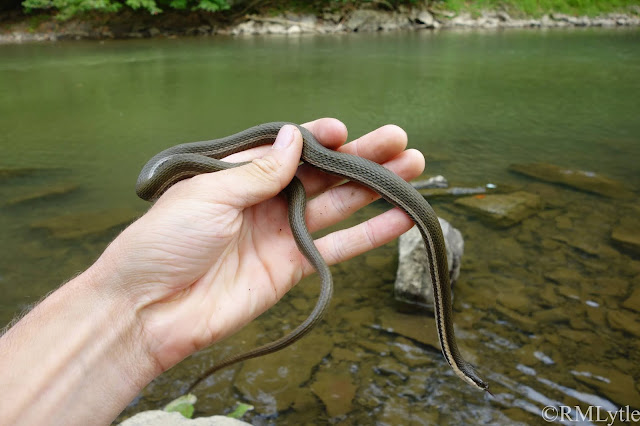As dawn broke on our second morning in Pennsylvania, it became abundantly clear to Jake, Noah and I that we needed to make a pretty drastic change. We'd struggled the whole day prior and well into the night to find larger fish that were willing to eat, and we just weren't successful. And now it was the coldest morning any of us had felt in months. Temperatures had dropped below 50 overnight. We hit the same creek where Noah and I had found wild trout the first day, and Jake quickly got his lifer, but we then dropped south. Even though we were inland and not even travelling an hour, we were going into slightly warmer weather. We were headed to another area I'd spent a lot of time around as a kid, but still hadn't fished much.
We dropped further down the Allegheny watershed, towards a town called Vandergrift and the surrounding area. Vandergrift is where my mother grew up and where my grandparents still live, northeast of Pittsburgh. We'd spend the second half of our trip fishing this area, which is just as species rich though much more impacted industrial activity. It would be interesting to see how the native species were faring in these waters.
The first spot we decided to check out was a spillway my grandfather has been telling me about for years. It was a spot he'd caught a number of muskellunge at over the years. That was certainly a big draw, but it was a spillway... from shiners to redhorse to huge catfish, spillways draw fish. They're both a barrier to upstream travel, a food delivery funnel, and a provider of deep holding water. We knew the likelihood of encountering things like drum, sauger, redhorse, and buffalo would be pretty high at such a place. And he first few minutes were not disappointing, as we saw multiple sized and species of redhorse. Some were just flashing, but others were actually tailing like carp. Or, frankly, like bonefish. Because if I were going to consider any North American freshwater fish a bonefish, it would be redhorse. They're sleeker than carp and I'm convinced they fight harder, pound for pound.
As it turned out though they aren't as easy to catch. I was getting snubbed constantly no matter what I presented these fish. This surprised me a bit, I'd expected these fish to be about as difficult as carp and a little easier than white suckers, but at least in the conditions we'd been presented so far they were about as tricky as white suckers if not more. Even with bait they were far from pushovers.
Incidentally, the first notable catch, by Jake, wasn't a fish, but a reptile. He'd actually caught one the night before as well, albeit a juvenile, and that one had been my lifer. It was a queen snake, an unassuming but beautiful semi-aquatic natricine that feeds primarily on crayfish. They're cool snakes but that's all I really knew about them, I hadn't even realized they lived in the area.
 |
| Lifelist fish #174, smallmouth redhorse, Moxostoma breviceps. Rank:species. |
 |
| Lifelist Fish #175, rosyface shiner, Notropis rubellus. Rank: species. |
Until next time,
Fish for the love of places fish live.
Fish for you.
And stay safe and healthy.












Those were our best days of 2020. Glad to meet Noah and Jake while fishing and hearing your fishing adventures.
ReplyDeleteLooking forward to our next visit when the social air is safer to breath. Love your post!
Tie, fish, write, conserve and photo on...
Thank you!
DeleteThis one will always be my favorite for very selfish reasons. Come back anytime. XO
ReplyDeleteOf course!
DeleteA great read, RM. I am glad you got to spend time with your grandparents.
ReplyDeleteThanks
DeleteThat Redhorse is a very cool looking fish!
ReplyDeleteIt is indeed.
DeleteThe queen snake and smallmouth redhorse are beautiful. I have never seen a redhorse before. It was wonderful to see you for this visit. Familiar faces, though masked, always make a difference.
ReplyDeleteIt was wonderful to see you all!
Delete